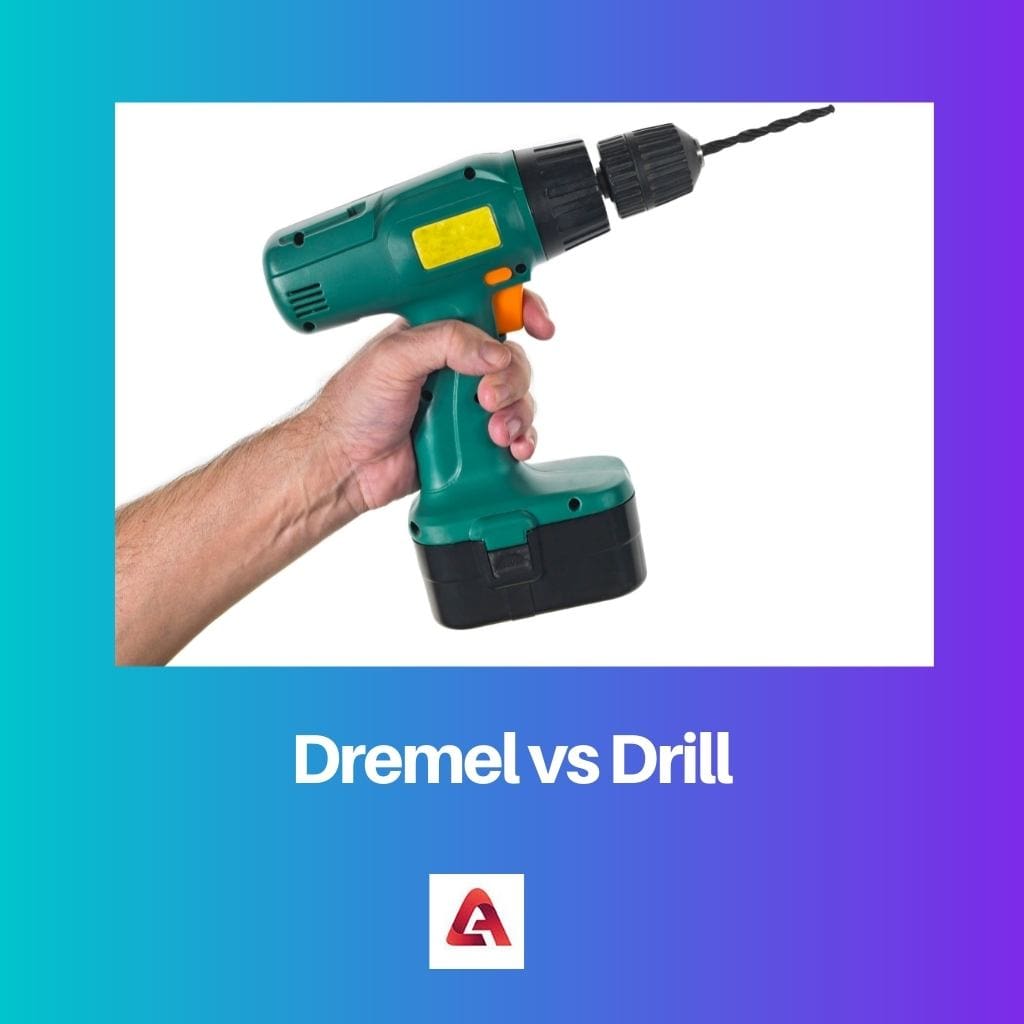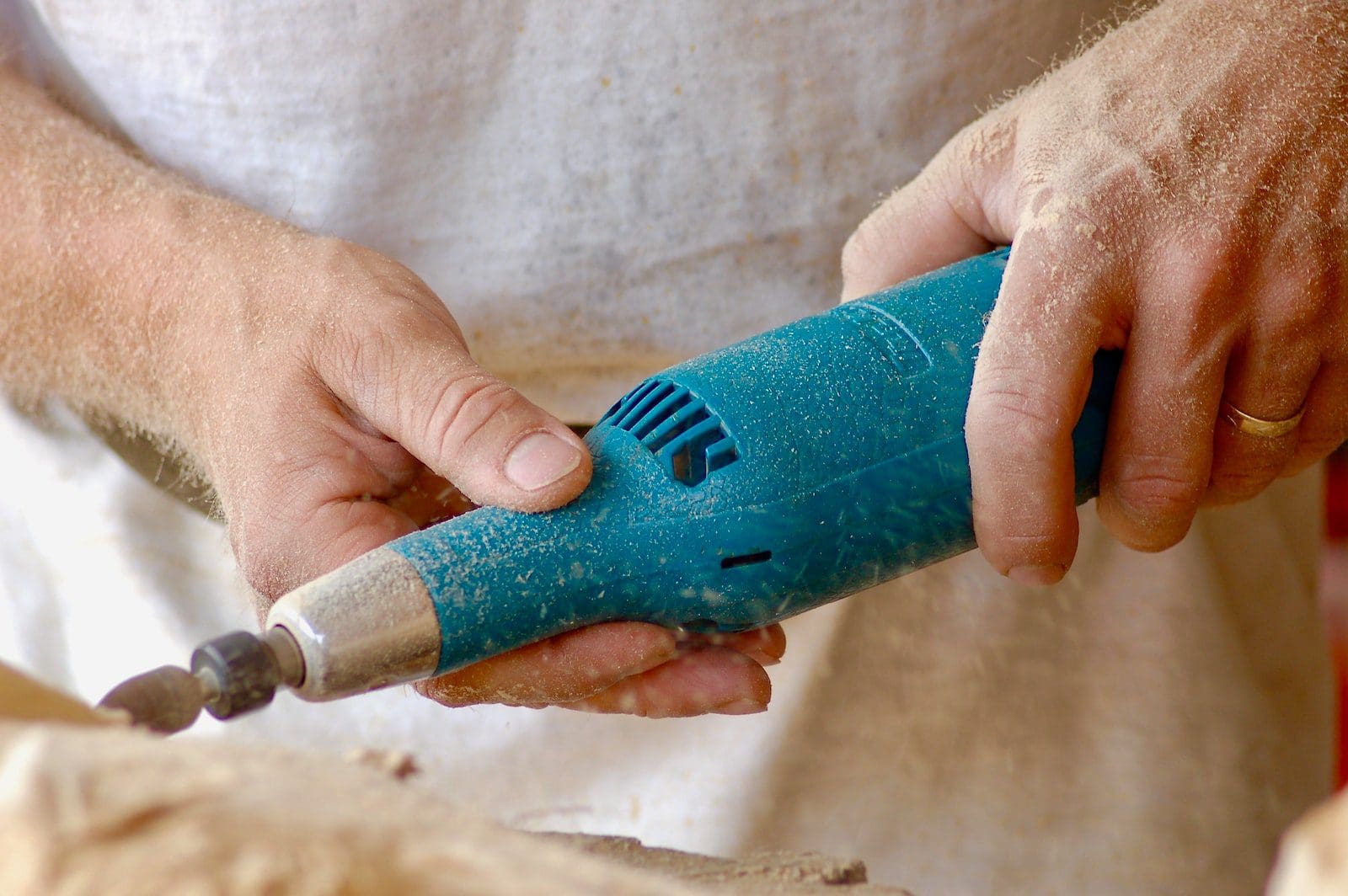Hardware tools form a very common and necessary part of everyday life. It does not matter if someone is proficient in their use or not. Certain tools have been designed so that anyone can easily use them and do a lot of work.
These tools can sometimes, however, be very confusing, especially for inexperienced people or beginners. One such pair of tools confused between is a Dremel and a drill.
They have a similar working mechanism and are quite commonly used hardware tools.
Key Takeaways
- Dremel is a rotary tool used for carving, engraving, and cutting, while a drill is used for making holes or driving screws.
- Dremel is handheld and comes with various attachments, while a drill is a powerful tool with a specific set of bits for drilling holes.
- Dremel is great for detailed work, while a drill is better for heavier-duty tasks like woodworking and construction.
Dremel vs. Drill
A Dremel tool is a handheld rotary tool known for its versatility and precision for various tasks. A drill is a powerful tool for drilling holes in wood, metal, etc. Drills come in many sizes and styles, including cordless and corded models.

A Dremel can perform a wider range of functions around the household, while the drill’s functions are more limited.
Comparison Table
| Parameter of Comparison | Dremel | Drill |
|---|---|---|
| Size | A Dremel is much smaller in size as compared to a drill. This is so because it lacks the handle of a drill. | A drill is a much larger tool as compared to a Dremel. This could be mostly because it has a very helpful handle while frilling holes. |
| Uses | Rotary dremels have several uses, including cutting, sanding, grinding, polishing, inlaying, engraving, etc. | When it comes to cordless drills, they have two main uses – drilling holes and driving screws. |
| Torque | Rotary Dremel has a much higher rpm, that is, 30000. | A drill’s rpm is much less than a Dremel, 1500 rpm exactly. |
| Function | Dremels have a different function based on speed rather than power, so dremels will not be very helpful in the case of certain works like drilling a hole or driving a screw. | Drills are power-based devices and thus are apt for making a hole or driving a screw. But they would be unable to perform functions requiring a lot of speed. |
| Design | Dremels are designed so that their output force is perpendicular to the drive shaft. | Drills are designed to parallel their output forces to the drive shaft. |
What is Dremel?
Dremel is a powerful tool that can be used for many hardware chores in many different situations.
It is a rotary tool, meaning that it can rotate at a very high speed and produce a great torque, which helps it be of much use.
A Dremel is comparatively a smaller tool. It has 30000 rpm, producing a large amount of torque that lets it accomplish several functions.
A Dremel has several uses. These include cutting, sanding, grinding, polishing, inlaying, engraving, etc. A Dremel is designed so that the power output is perpendicular to the drive shaft.
A Dremel is a speed-based tool rather than a power-based one, so it can accordingly perform speed-based and not power-based functions.
This includes many different hardware jobs, some of which are as mentioned above. But at the same time, a Dremel is not very helpful in certain power-based functions such as drilling a hole or driving a screw.

What is Drill?
A drill is another kind of powerful hardware tool. It is also a rotary tool. A drill is mainly used to drill holes or drive screws. It is a much larger tool as compared to a Dremel in size.
This could be because it has a handle that makes up for a major portion of its size.
A drill has an rpm of 1500. It is more of a power-based tool rather than a speed-based tool.
Hence it is very helpful in certain functions like driving a screw or drilling a hole, but it will not be able to accomplish a variety of other speed-based functions that can be easily accomplished by some other tool.
A drill is designed so that its output power is parallel to the drive shaft. It is a very commonly used tool.

Main Differences Between Dremel and Drill
- A Dremel is smaller than a drill because, unlike the drill, the Dremel lacks a handle.
- Dremel has a much larger torque as compared to a drill. The Dremel has 30000 rpm while the drill has 1500 rpm.
- The Dremel is designed so that its power output is perpendicular to the drive shaft, while the drill is designed so that its power output is parallel to the drive shaft.
- A Dremel is a speed-based tool, while a drill is a power-based tool. This makes the Dremel unable to perform several functions that a drill can perform. But at the same time, the drill is also not very useful in performing several speed-based functions like the Dremel can.
- The main uses of a Dremel are cutting, sanding, grinding, polishing, inlaying, engraving, etc., while the main uses of a drill include drilling a hole and driving a screw.






